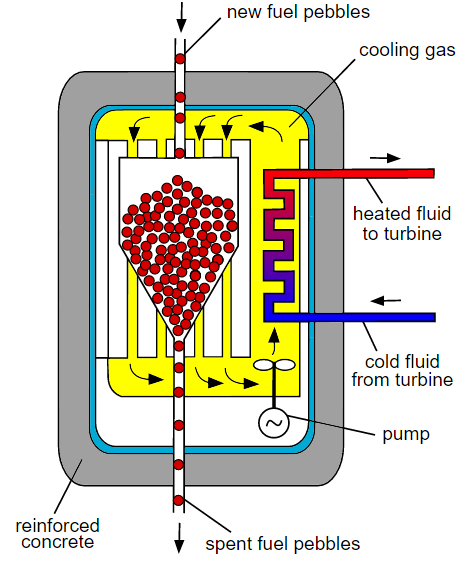Pebble-bed reactors utilize “pebbles” made of uranium covered with a layer of ceramic and graphite for fuel. The Chinese are preparing to go operational with one of the high temperature gas cooled pebble-bed reactors (HTGR) they call HTR-PM. While the Chinese claim that such reactors are very safe, experts in the U.S. and Germany associated with MIT warn that there are still possibilities for serious accidents. Their report was published in the journal Joule.
Rainer Moormann, one of the authors of the MIT report, said, “There is no reason for any kind of panic, but nuclear technology has risk in any case. A realistic understanding of those risks is essential, especially for operators, and so we urge caution and a spirit of scientific inquiry in the operation of HTR-PM.”
HTGRs can generate electricity more efficiently than older conventional reactors. They also do not have some of the safety problems of conventional commercial reactors. The graphite and ceramic covered pebbles of uranium fuel can withstand the high temperatures and passive cooling systems in the cores of the HTGRs which prevents the meltdowns that are possible in conventional commercial reactors.
Some boosters of pebble-bed reactors claim that they are so safe and self-regulating that operators could just turn them on and walk away. As a result of this claim, the HTR-PM has been constructed without the safeguards that conventional commercial reactors incorporate. The HTR-PM does not have a high-pressure, leak-tight containment structure to trap escaping radioactive materials in case of an accidental leak of the core. It also does not have a backup active cooling system.
Moormann said, “No reactor is immune to accidents. The absence of core meltdown accidents does not mean that a dangerous event is not possible.” The report goes on to point out that with any new technology there is always a danger of user error. Experimental HTGRs have formed localized hot spots in the core and generated unexpectedly high levels of radioactive dust. The pebble-bed design also produces more nuclear waste than conventional commercial reactors which is an important consideration.
Moormann also said, "HTGR designs with what's known as a prismatic core seem to be less problematic than the pebble-bed one, so development work should concentrate on that.”
The MIT report suggests several steps that can be taken as a precaution in the construction and operation of HTGR. There should be detailed continuous monitoring. Containment and cooling systems should be installed. There should be an extended startup phase during which the reactor can be monitored as it reaches operation temperatures. More and better storage options for the nuclear waste produced by the HTGR should be developed.
Moormann said, “There was already some controversy about pebble-bed HTGRs, but my impression was that many problems of them were not sufficiently published and thus not known to some of my colleagues. I hope that the pros and cons will be broadly discussed.”
